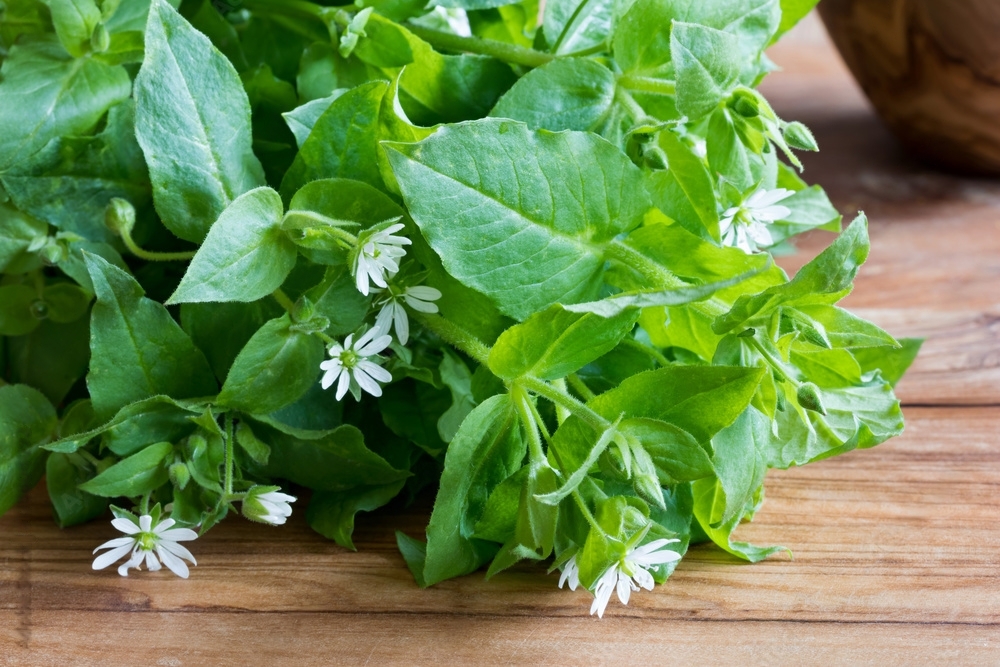Chickweed, The Weed That’s Delicious
Cast your gaze downward on your next stroll through Marblehill’s meadows. Amongst the vibrant blooms and verdant grasses, you might spot a tiny green carpet – the chickweed (Stellaria media). Often dismissed as a pesky weed, chickweed is a surprising little plant with a hidden history, unexpected benefits, and a surprising resilience that belies its delicate appearance.
A Delicate Delight: Identifying Chickweed
Chickweed is a master of disguise, easily blending into its surroundings. Look for a low-growing carpet of small, oval-shaped leaves with smooth edges. Delicate white flowers with five deeply cleft petals emerge in spring, adding a touch of charm to the meadows. As summer progresses, the flowers give way to tiny capsule-like fruits, ensuring the chickweed’s continued presence.
Beyond the Weed Patch: A History of Chickweed’s Uses
Chickweed’s reputation goes far beyond being a garden nuisance. Historical records show it was once a valued addition to salads and a source of vitamins and minerals. The ancient Egyptians documented its use, and it was a common ingredient of European cuisine well into the Middle Ages. Native American tribes used chickweed for medicinal purposes, while some cultures even incorporated it into poultices for wound healing.
A Forager’s Friend: While chickweed might not be on a supermarket shelf, it still holds appeal for adventurous foragers. The young, tender leaves can be enjoyed raw in salads for a slightly peppery, refreshing flavour. They can also be steamed or sautéed for a more cooked vegetable experience. Just remember to harvest from unsprayed areas and avoid overconsumption, as chickweed contains oxalic acid, which can irritate the digestive system in large quantities.

More Than Just Munchies: Exploring Chickweed’s Potential
While chickweed might not be a culinary mainstay, it offers a few other surprising uses:
- Natural Remedy: Chickweed has been used traditionally for various ailments, including coughs, rashes, and eczema. However, scientific evidence to support these claims is limited. Consult with a qualified herbalist before using chickweed medicinally. Chickweed also contains vitamins and minerals like vitamin C, vitamin A, and iron, but not in significant enough quantities to be the sole source of these nutrients in your diet.
- Feathery Fun: The mature chickweed seed pods burst open with the slightest touch, releasing a cloud of feathery seeds. Blow on them and watch them take flight—a delightful activity for children and adults alike. This helps chickweed in its continued survival, as the wind carries the seeds far and wide.
- A Haven for Wildlife: Chickweed’s low-growing mat provides a haven for small insects and invertebrates, creating a vital part of the meadow ecosystem. These tiny creatures in turn become a food source for birds and other predators, creating a vital link in the food chain.
Coexisting with Chickweed: Finding Balance
While chickweed can spread quickly, it’s easily managed in a garden setting. Consider allowing a small patch to flourish, providing a habitat for beneficial insects and a source of food for birds. Chickweed also acts as a living mulch, helping to suppress weeds and retain moisture in the soil. If chickweed becomes overwhelming in cultivated areas, hand-pulling is an effective and organic way to control its spread.
Tiny Treasure, Big Potential: A New Appreciation for Chickweed
The next time you encounter chickweed at Marblehill, take a moment to appreciate its delicate beauty and surprising potential. This “weed” is a testament to nature’s resourcefulness and a reminder that even the smallest plants can offer hidden benefits. So next time you see chickweed, you might see it not as a garden foe, but as a potential salad ingredient, a natural remedy (with caution!), a fun activity for children, or simply a reminder of the fascinating diversity of the plant world, with a rich history and a role to play in the delicate balance of the ecosystem.






